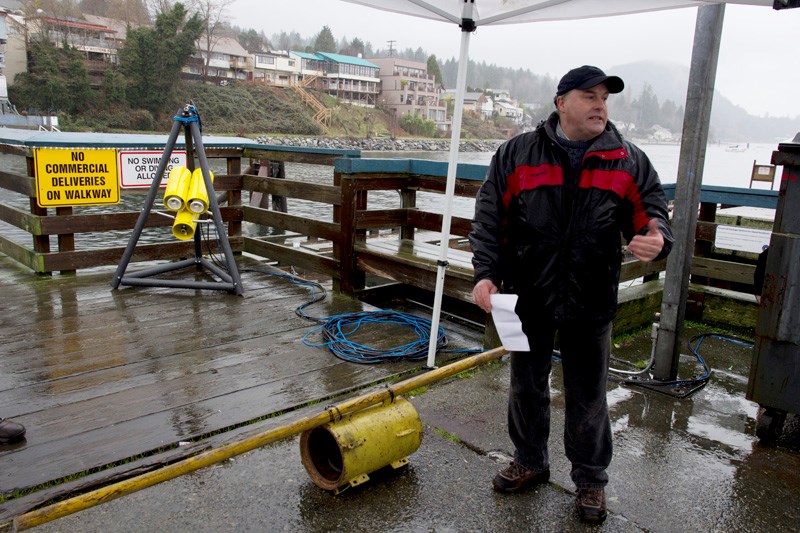In 1964 Donald M. Hauka Sr. launched one of the first remotely operated submarines in history from the Gibsons wharf.
Last Saturday, Dec. 6, Hauka’s son Donald and the Sunshine Coast Museum and Archives Subsea Committee recreated the launch in honour of the Hauka Mk 1’s 50th anniversary.
The Mark One was built to be as streamlined and uncomplicated as possible. Consisting of a tripod frame with two lights and a camera, the unmanned submersible was — in 1964 — at the forefront of what would become an on-going trend of smaller, more portable technology.
It revolutionized the subsea industry and put Gibsons in the centre of the blossoming market.
“For [Hauka Sr.] it was the equivalent of landing a man on the moon,” said Hauka Jr. “Only in this case, he realized, you don’t need a man. That made everything much simpler. Why risk somebody’s life, sending them down to the great depths [with] all that stuff for the life support system, when you could put a camera in a housing with some lights, a little bit of electronics, and send it down with no risk to a human life.”
Today the idea of a portable camera is commonplace. Nearly everyone has one roughly the circumference of a dime implanted into his or her cell phone, along with a million other functions. But 50 years ago television was brand new and the ocean floor was basically a mystery.
“This was the first time that humans had been able to do this kind of thing,” Hauka said.
Since then, technology has improved in leaps and bounds. The recreated Mark One was built out of PVC piping and used a Crystal Cam with two 650-watt lights. Unlike the camera originally used in the Mark One, the crystal cam is small enough to fit in the palm of a hand and — as was demonstrated — can be thrown roughly at the ground with no damage.
Mike Clement, president of Subsea Acoustic & Video Imaging, remained true to the operational procedure that Hauka Sr. used in 1964, meaning that directions were given over a two-way radio to operators Fred Mason and Jon Hird who manually pulled the Mark One a few feet off the bottom and moved it along the wharf.
“This is old school, we were recreating what Don was doing,” Clement said. “In his day it would also have been manually done, but his sea equipment was much heavier, so he would have been having a crane operator lift, then move the boat, then drop the tripod down again.”
The Mark One was really only a building block for Hauka Sr.’s future projects. In 1966 he completed the Mark Two — nicknamed the Yellow Submarine — a much larger submersible with an analogue control system. He continued advancing his technologies up until his death in 1993 when he left his last submarine, the Flying Saucer, partially blueprinted.
“I’d love to see that in the water,” said Hauka Jr.
It might happen. The SCMA Subsea Committee has plans to recreate all of Hauka Sr.’s submersibles, hopefully finishing with a working prototype of the Flying Saucer.



